Camelot has run the National Lottery since its launch. With the licence up for renewal, it’s looking like a four-horse race for the fourth licence – and potentially the most open ever. Could there be changes ahead?
In 1994 Camelot walked away with the jackpot. Created by Cadbury Schweppes, banknote printer De La Rue, and British computer business ICL, among others, the company fought off no less than seven contenders to win the first contract to run the brand new National Lottery.
Within 24 weeks of securing the licence, it built an infrastructure, installing terminals in more than 10,000 retailers and creating what was at the time the largest communications network in the UK, equivalent to the four biggest high street banks combined.
Public excitement ahead of the first prize draw was palpable. Some 22 million people tuned in for the first weekly draw on 19 November, watching as 10 winners walked away with their share of a £5m pot. Camelot was lauded for its success.
By 2001 though, at the end of that first licence period, some of the shine had worn off. Four years earlier, there had been controversy as three senior Camelot execs picked up six-figure bonuses. Some of the initial public interest had dissipated too. And the bidding process for the second term reportedly lacked clarity, ultimately ending up with a High Court battle led by Camelot after the contract was initially awarded to Richard Branson’s People’s Lottery. Branson branded the decision “cowardly”.
The bid for the third term in 2007 was simple in comparison, with Camelot appearing to easily fend off Indian lottery group Sugal & Damani.
But now, 27 years after that initial win, the fight for the fourth term running the National Lottery looks like it could be the fiercest yet. This time, Camelot’s rivals smell blood. “They appear to have set out their stall genuinely to change this time,” says a senior source from a rival bidder. “Because if they don’t change this time, they’re probably accepting it’s a forever state of affairs.
“They want to create a rhythm where it’s a 10-year licence and you genuinely have a chance of losing it at the end. So there’s a much heavier sense that this is a process set up for change. And all the reassurances we’ve had indicate this is a real process, and a makeable decision. They’ve been clear they would make a change if there were a better bid.”
So, can Camelot walk away the winner for a fourth time? Or could it finally be someone else’s turn to take home the £80bn prize?
A British institution
Whichever bidder secures the licence, it will inherit one of the world’s biggest and most established lotteries. Since its inception, the National Lottery has raised more than £42bn for good causes, handed out £78bn in prize money and created nearly 6,000 millionaires. Its sales exceed the UK revenues of Cadbury, Coca-Cola, Nestlé, Walkers, Warburtons, Heinz, Pepsi and Purina combined, according to Camelot, reaching £7.9bn in the 2019-20 fiscal year, £5.5bn of which came via retail.
Plus, though participation dropped to as low as 27.3% in 2017, it has since improved and remains a veritable British institution. The winner won’t walk away with big margins, points out Warwick Bartlett, CEO at Global Betting & Gaming Consultants (GBGC), but it will have control of a practically recession-proof business model with a guaranteed payout for shareholders every year.
Challengers face a tough battle to wrest it away from the incumbent, though. “They already have their offices, the network, the relationship with the retailers,” says Bartlett. “Plus, it would be quite a political decision to remove Camelot.” Were they to pick an untested alternative and it all went wrong “it would be all over the press. So, if it’s not broke, why try to fix it?”
Therein lies the point of contention. Camelot regards the lottery as being in its best shape ever, amid record sales, but others argue it has dropped the ball too often and needs a new approach to re-engage punters.
Perhaps the most high-profile mistake came in 2016, when sales fell 8.8% to £6.9bn after a change to the odds on Lotto, its most popular draw-based game, only two years after the price of a ticket had doubled to £2. In 2018, CEO Nigel Railton vehemently defended both decisions. “It’s like any product,” he told The Grocer. “You have to innovate, you have to change, and there aren’t that many levers you can pull – you can change the price, the matrix, or the amount of times you do the draw. So I think changing the price was absolutely the right thing to do… and changing the matrix in 2015 was done for all the right reasons.”
“It would be quite a political decision to remove Camelot”
Allegations of a #ripoff lottery did the rounds on social media nevertheless, followed by the launch of a Public Accounts Committee inquiry in 2017. A report compiled by the National Audit Office that year compared profits and charitable donations with lottery sales, which increased by 27% from 2009-10 to 2016-17. In that time, returns to good causes only rose by 2%, while the profits Camelot dished out to shareholders grew 122% (though that still only represented 1% of total sales).
True, contributions to good causes were up 30% from the second to the third licence period. But still the whiff of profit over philanthropy, fuelled by a new owner in the form of Canadian pension fund the Ontario Teachers’ Pension Plan, has lingered. In the latest accounts ending March 2020, of the £7.9bn sales, £1.9bn went to good causes: that’s 24% (or 24p) vs 27% in 2009, though the pot of actual money, Camelot points out, has risen significantly.
Add to that the millions in fines from the regulator for glitches in its mobile app, plus the scandal of paying £2.5m in prize money out to a fraudster in 2019, and Camelot has come in for its fair share of criticism.
To address this criticism, CEO Railton commissioned a strategic review in 2018. The link between the game and its contribution to the community needed to be improved in consumers’ minds, the review established. A one-year deal with ITV was signed and a new ad agency brought in to run more targeted marketing campaigns for neglected games – fuelling a 9.7% growth in sales in 2019-20. Not that sales were doing too badly before. Since the start of the third licence in 2009, total National Lottery sales have grown by 53% and annual returns to good causes have risen 34% – with the latter amounting to almost £500m more.
Still, say rival bidders, there is plenty that could be improved upon. “At nearly £8bn the National Lottery is one of the largest lotteries in the world but when you look at the participation, it has been declining,” says Camilla Folladori, international business development director at Sisal, which confirmed its rival bid in April 2021. “With consumer relevance it’s lost a bit of its shine. It started with 40 million players at its onset, and now it’s at a bit less than 30 million. In particular, since there were a number of changes to its Lotto product, there was an additional decrease. When you look also at the per capita spending it’s definitely way lower than many other lotteries in western Europe. This means there are opportunities.”
Opportunities it seems the Gambling Commission is keen to see leveraged. In launching the bid for the fourth 10-year term in August – the winner of which will likely be announced in November 2021 – the regulator set out three key changes. First, closer alignment between the incentives for the franchisee, and the contribution to good causes. Currently profits are calculated as a percentage of sales, rather than contributions. Second, greater flexibility will be built into the licence to provide the opportunity to better maximise returns to good causes. Finally, the licensee will be required to foster stronger relationships with distributors of this community funding. “We will be evolving our approach to regulation to build on the National Lottery’s huge successes,” says CEO Neil McArthur.
Though the Gambling Commission says it “wouldn’t be appropriate to comment on the number, or indeed identity, of applications” nor “the details of their proposals,” four companies have publicly confirmed their participation (see boxes). Others rumoured to be among the applicants are Richard Branson’s Virgin Group, and Health Lottery operator Northern & Shell. This healthy level of interest will likely drive up the quality and levels of innovation included in proposals, believes Tim Ward, CEO at public sector procurement specialist Opportuni. “It forces everyone to up their game.” Something that is bound to leave Camelot nervous.
Digitisation
On exactly what will prove the winning formula, experts suggest new games – team games, repeat games, non-cash prizes – as well as better marketing, greater digitisation and improved relationships with retailers could all prove to be key points of differentiation. For Ward, “the thing that will win someone the contract is their ability to market effectively, and gain interest from the general public.” For Bartlett, it could come down to proposals for online sales and a more digitised product. Though Camelot has increased investment in digital, leading to sales of £2.5bn last year (up 34%), it has faced criticism for failing to innovate quickly enough. “Camelot has never really gone out and heavily promoted digital,” he points out, “though it runs very efficiently and has grown from a small base.”
A source involved in a rival bid goes further. “They’ve completely missed the shift to digitisation that the rest of the industry has done. Which means, incidentally, they don’t know who their players are, and they’re still stuck in the old world of having to shout at everyone. Because they don’t know who’s playing.”
Already this shortcoming has been leapt on by Keith Mills, chair of the bid by Sazka, trading as Allwyn in the UK. The Czech company would introduce new interactive lottery games and digitise the current product, creating a database of lottery players – similar to one collected by supermarket loyalty schemes, he vows.
Still, this quest for digitisation must be careful not to alienate a key stakeholder: independent retailers. Despite the ability to play online, Camelot’s network of 44,000 independent outlets continue to account for some 70% of National Lottery sales. They delivered £5.4bn in sales last year, an increase of £74.3m.
This could emerge as a new battleground for Camelot, which hasn’t always enjoyed the smoothest of relationships with the sector. “Camelot went through a stage where they lost a little bit of respect from the independent sector, with retailers feeling ignored,” admits Jason Birks, deputy VP at the National Federation of Retail Newsagents. In recent years engagement has improved, he adds, following Camelot’s decision to invest an additional £20m in retail in 2018, doubling the size of its sales force and pushing up average weekly visits to stores from 2,000 to 5,000.
Frustrations
Yet those frustrations were reignited earlier this year with Camelot’s plans to introduce terminals at 900 Aldi stores. The average commission from a lottery terminal works out at about £7,000 per store, says Camelot. “For an independent it can be the difference between profitability and running at a loss,” says Birks.
Some retailers also feel the operator has failed to inject innovation or investment into the channel. “I don’t think Camelot deserve another licence as for the last few years they have been very average, with limited innovation, mediocre support for retailers, with too much red tape,” says another retailer. “A new licensee should create a fresh approach and more energy.”
Statistics from Lumina show the average purchase frequency of a lottery ticket in a convenience store has fallen 3% in the past five years. However, the lottery remains a driver behind store visits, fuelling 12% more shopper trips in the same period, and 44% of independents say the National Lottery is more important than ever to their business.
”A new licensee should create a fresh approach and more energy”
For its part, Camelot tells The Grocer “we fundamentally believe that The National Lottery’s success – which culminated in record sales last year – is reliant on building and maintaining a healthy retail channel”.
Yet it clearly has competition from other confirmed bidders in the quest for retailers’ hearts and minds. “We know how important independent retailers are in creating the right environment,” says Folladori. A Sazka spokesman says it is well aware that “the retail sector is still the frontline for lottery sales”.
Rivals also argue greater digitisation doesn’t have to be at the expense of retailers: “Quite the reverse,” says one. If you digitise successfully, “when you don’t win on a Saturday, you get a text on your app which you’ve downloaded, which says ‘sorry you didn’t win, but this week you’ll get a free play as long as you go back to your corner shop. Digital means you can send them back to the shopkeeper that sold you the original ticket.”
“No operator will forgo retail,” adds Greg Deacon, now chief customer officer at convenience app Jisp, and previously head of field sales at Camelot. “But it’s how can you enhance that in an efficient and effective way to continue it, recognising growth will come from digital plays but also ensuring you maintain or even grow what you’ve got in retail? That would be a really compelling quest for any new operator.”
It’s a quest rivals are keen to embark on.
The bidders
Bidder one: Sisal/Barnardo’s

Founded in Italy in 1947, Sisal was set up to operate gaming products as a form of entertainment and to help reconstruct sports facilities destroyed during World War II.
In the years since, “we have developed an expertise in any kind of gambling product”, says international business development director Camilla Folladori. In Italy, it manages around 50,000 PoS at retailers, split between lotteries, gaming and payments and services and has been the sole licensee of Italy’s biggest lottery game, SuperEnalotto since 1997.
More recently it has expanded into Morocco, Spain and Turkey, the latter contract win boosting revenues by 300% since it took over in August 2020.
The National Lottery and Sisal are perfectly aligned, says Folladori. “The purpose of the National Lottery is to give back to society, and to protect participants’ interests. The main purpose of Sisal is to create the right environment for a responsible gambling approach.”
Its decision to partner with charity Barnardo’s, which will play an “active role” in operations via a seat on the board, makes sure a statement on responsible gambling is really transferred into each single action and each single step we take.”
Folladori is confident they’re in with a chance. “Not because we don’t think our competitors are talented, but because of our core strengths: this long-standing heritage, the expertise, our ability to innovate and manage distribution networks, both retail and online.” Plus, she adds, Sisal has taken on some of the same contenders in other international bids, and won. “That gives comfort to us,” she smiles.
Bidder two: Allwyn
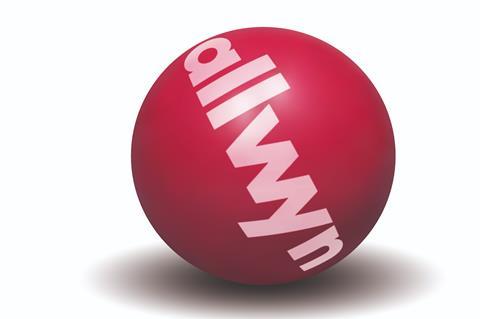
In April 2021, Czech lottery operator Sazka Group rebranded as Allwyn in the UK to help in its bid for the National Lottery. Also operating in Greece, Cyprus, Italy and Austria, “we know what it takes to run lotteries successfully”, says a spokesman.
That means managing 63,000 PoS and digital platforms for 80 million adults and, with annual sales of €17bn (£14.7bn), “supporting direct community investment, financing a wide range of good causes across the health, sports, arts and community sectors,” the spokesman adds.
To demonstrate its digital focus, Allwyn has joined forces with Vodafone, which “will bring invaluable insights into digital, retail behaviours and market trends” to support “the integration of new, exciting features and capabilities to keep ahead of ever-evolving consumer demands” .
Sazka has also put together an advisory board including ex-Air Miles guru Keith Mills and ex-Sainsbury’s CEO Justin King. The latter has vowed that Sazka can “revive the high street” and drive more players to corner shops using its technology savvy.
“Camelot’s growth has been achieved largely by fewer players playing much more often,” King told the Daily Mail. Allwyn’s approach would be “a footfall driver, a reason for regular visits, which perhaps those corner shops have lost”.
Saska’s track record is strong, the spokesman adds. “Average lottery market growth in Europe from 2013 to 2018 was 7.4%, yet Sazka Group reached double-digit sales growth, including 77.7% in the Czech Republic, 26.8% in Greece, 26.6% in Italy and 14.8% in Austria. This means more money to fund good causes.”
Bidder three: Sugal & Damani
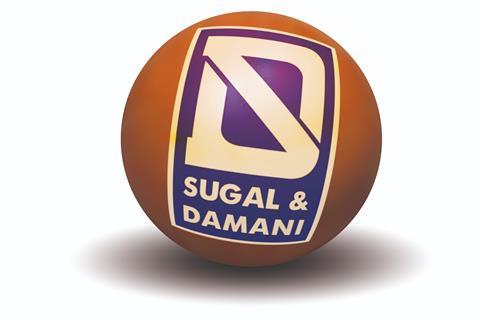
India’s largest lottery operator Sugal & Damani has remained quiet since confirming its entry into the National Lottery race back in October 2020, and didn’t respond to requests from The Grocer to learn more about its bid. But it isn’t a stranger to the process, having competed one-on-one with Camelot for the third term back in 2007.
At the time, the Delhi-based conglomerate, with interests in IT, utilities and stockbroking as well as lotteries, was far more vocal. In response to the decision to retain Camelot at the helm, it claimed the game had been given a “licence to underperform”.
Despite this disappointment, it’s back again. “As a leader in operating lotteries across India and other jurisdictions, Sugal & Damani has shown its deep interest in operating the UK National Lottery since 2007 when it participated and also [was] selected as a reserve bidder by qualifying all required standards like propriety, technology, player protection, channel management, and financial capability,” said group CEO Kamlesh Vijay at the time of the announcement.
Though no details of its plans are known, in 2007 local media reported it proposed donating back any profits of more than 1%, as well as releasing new games and introducing increased incentives and services for retailers. Currently, the business provides lottery, gaming and commercial services across 26 jurisdictions, with its technology deployed at more than 200,000 PoS, and seven million active customers across 70 games.
“We are looking for a fair and open competition [and] are very much in the game,” added Vijay – promising a consortium of partners and further details would be shared widely “in due course”.
Bidder four: Camelot

Camelot was a consortium, set up by International Computers Limited, Racal, Cadbury Schweppes, De La Rue and Gtech Corporation, with the sole aim of securing the franchise for the first term of the UK lottery in 1994.
After winning the third licence in 2009, Camelot underwent a change of ownership, bought for £389m in 2010 by Canadian pension fund the Ontario Teachers’ Pension Plan. But despite criticism of the move, Camelot has almost continuously grown sales since then. Total annual sales reached nearly £8bn in the 2019-20 fiscal year, with revenues up 53% over the course of the third licence, it says.
Since 2009, too, annual returns to good causes have grown by 34%, now almost £500m more than at the start of the licence period. There’s been other criticism over the years too, though – everything from a lack of clarity between the games, a lack of innovation in digital, prioritising profits over philanthropy and a neglect of its retail network. Still, the company insists retail is at the heart of its operations, with in-store sales up last year by £74.3m to £5.4bn, and an average commission of £7,000 earned by store owners.
“We’ve invested heavily in retail at the same time as growing the largest digital lottery channel in the world by revenue,” says a spokeswoman. “While we’re unable to share specific details of our bid, we can say Camelot’s philosophy remains the same – with retail a cornerstone of our strategy,” she adds.
“National Lottery retailers have been fantastic partners to us over the past 27 years and, as they’ve always been there for us, they can expect our continued support.”







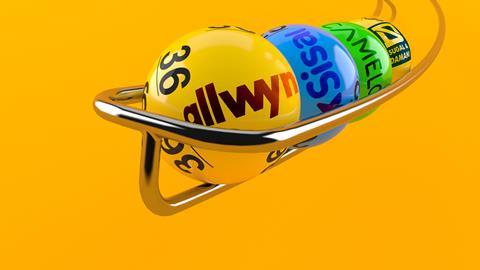
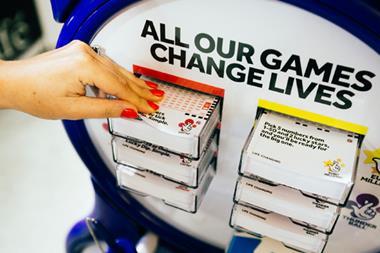




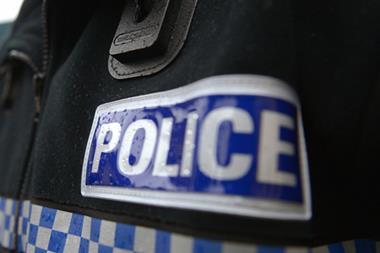

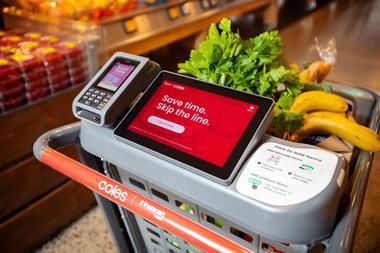




2 Readers' comments